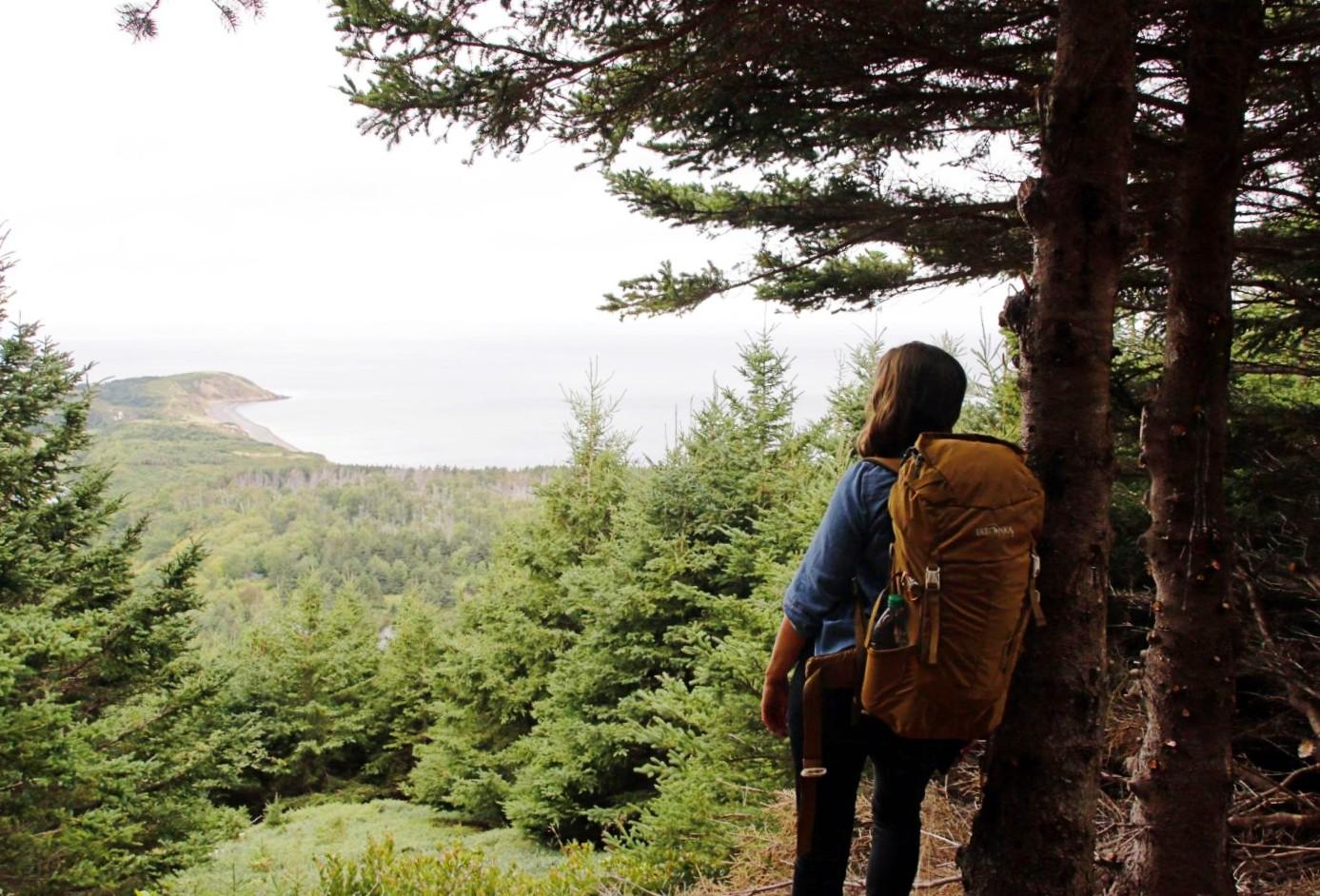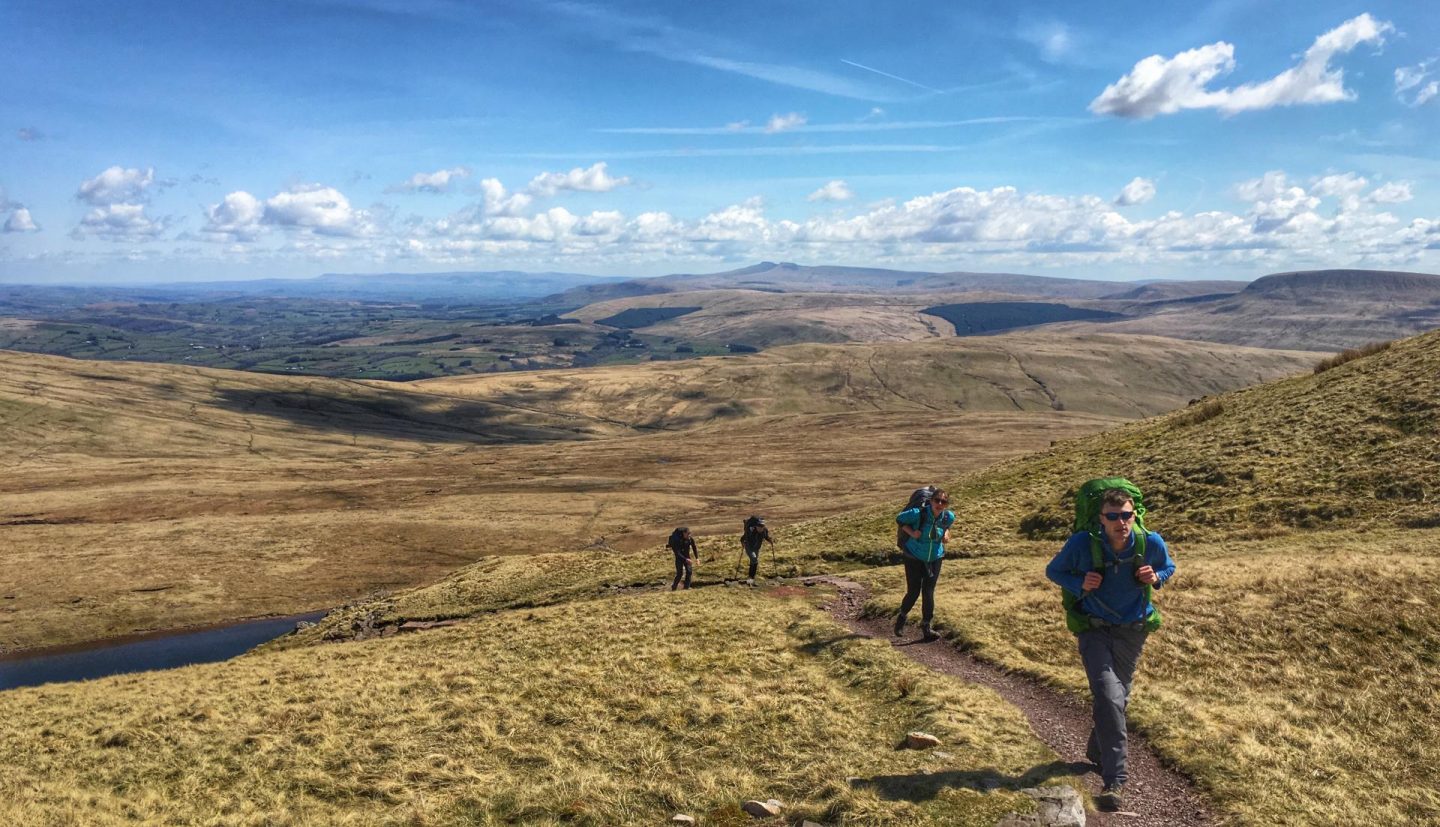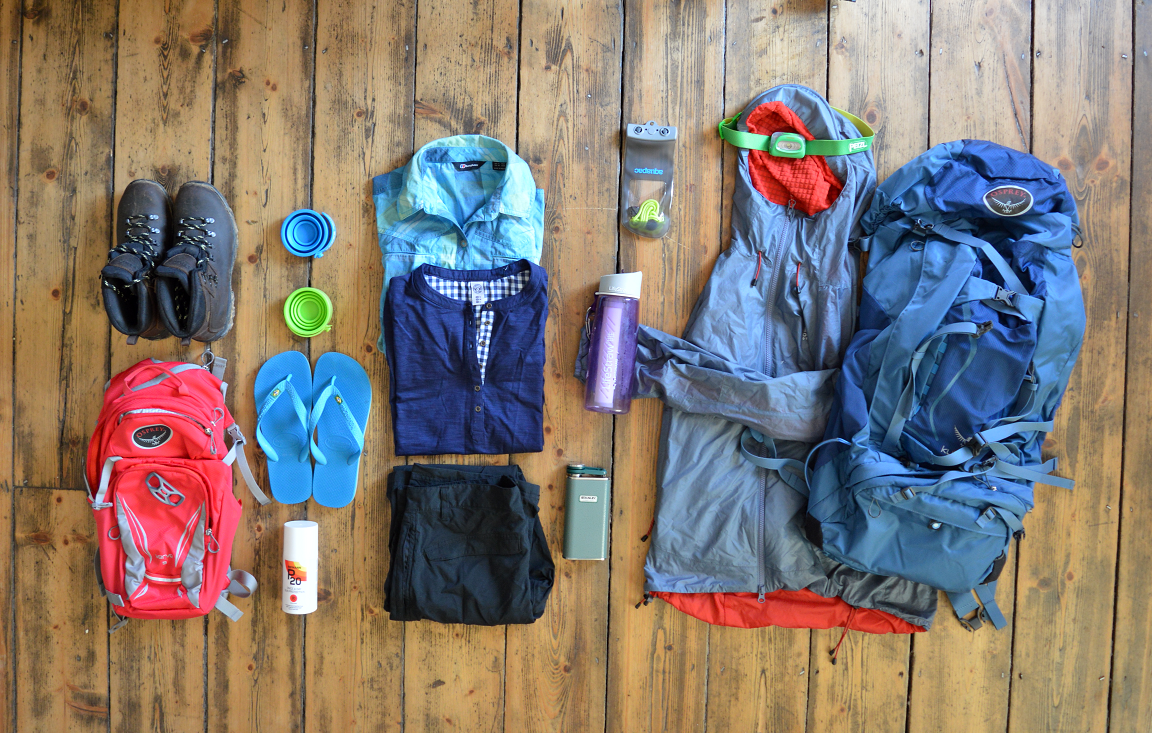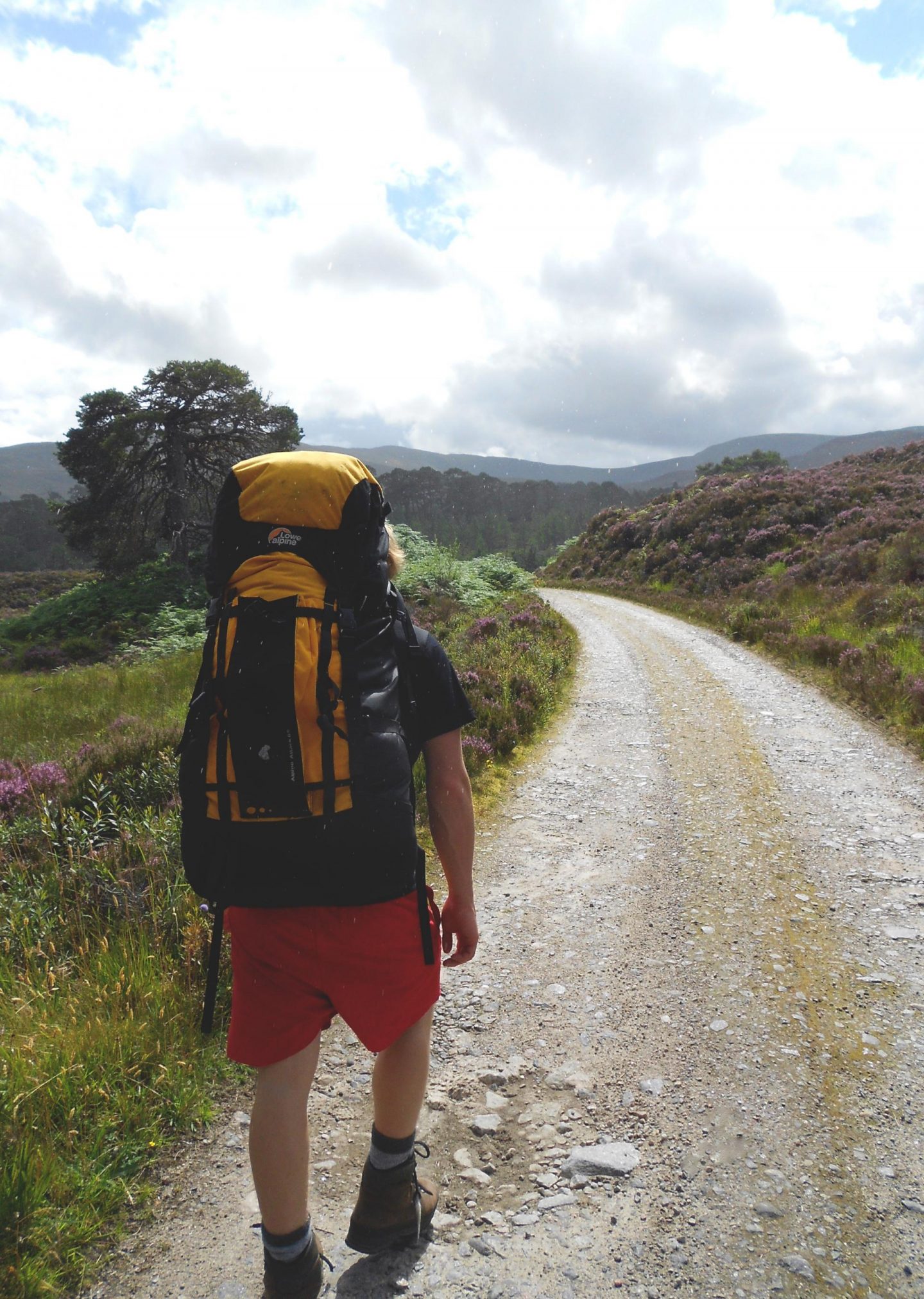
Love walking in the wild? Take your adventures one step further and plan your first multi-day hike with my top tips and handy packing guide, in collaboration with Swedish outdoor outfitters Addnature, who can kit you out with all the gear you’ll need for an epic hike.
10 tips for your first multi-day hike

1, Pick your route wisely
Make your first multi-day hike achievable and enjoyable. It doesn’t need to be a huge trek – a relaxed weekend on a trail with a camp halfway is a brilliant introduction to the joys of long distance walking. Well-known long distance routes are ideal to dip into for a few days, as they are usually well mapped and signposted. Check apps such as Komoot for inspiration from fellow hikers, or try this list of multi-day UK hikes and this list of routes in the USA. Plan your hike carefully in daily stages, noting where you can buy food, refill water and camp. Pack a waterproof physical map as well as using any online mapping tools to navigate.
2, Have a plan B
Pick an ‘escape route’ at one or more spots on your walk, such as a section of the trail where there’s a short walk to a road or a village. This is just in case anything goes wrong, or in case the weather turns awful (or just if you’re simply not enjoying it, there’s no shame in that!). Let someone know where you’ll be hiking, leave them a map of your route and check in with them regularly. I always carry a powerbank so I can keep my phone charged – a solar charger is ideal for longer journeys – but don’t forget you may not be able to rely on your phone, so always carry a physical map.
3, Take tried-and-tested kit
Now is not the time to break in your shiny new hiking boots or bring along a cheap stove to see if it’s any good. Bring your tried-and-trust kit and check it all carefully before you leave. If you have space, try to bring spares, such as spare gloves or a spare gas canister.
4, Plan your water supply
The rough rule of thumb is that you should plan to carry a half litre of water for every hour you hike. I rarely manage to drink that much, but I usually carry 4-5 litres for an all-day hike, plus extra for cooking. I carry a few water bottles for easy access, plus a CamelBak full of water. A water filter such as the Big Berkey water filter for camping is a good choice for traditional camping with a large group. Further afield, I swear by Lifestraw bottles, which render natural water sources such as rivers safe to drink, and are ideal in an emergency or if you miscalculate how much water to carry. Water filtering tablets will also render water sources safe to drink if you’re in the wild. Well-trodden long-distance paths usually have refill stops and you can also ask for water in cafes, but don’t assume you’ll be able to fill up at every stop, and carry more water than you need.
5, Have a meal plan
You’ll have to plan what you’ll eat more carefully for a long-distance hike than for a more relaxed day out walking – after all, you’ll have to carry all of it and make sure it lasts the duration of your adventure. I pack high-energy food that doesn’t spoil, such as ration packs, noodles, trail mix and hard fruit such as apples. If you’re walking near civilization you can check ahead to see if you’ll be coming to shops where you can restock on fresh food, otherwise you’ll need to make sure you have plenty to last you the days you’ll be on the trail. And if you’re anything like me, you’ll want to carry coffee and filters for a morning brew.
6, Make sure your backpack is waterproof
Even a water-resistant backpack or a rain cover won’t completely keep your kit dry in a heavy downpour. Pop a large waterproof dry bag (or even a bin bag at a pinch) inside your backpack before you fill it with kit. I also wrap my sleeping bag in a separate waterproof bag.
7, Pack for all weathers
This one comes from bitter experience – no matter what the weather forecast may tell you is in store for your hike, make sure you pack warm and wet weather gear. You can get away with being a bit cold and wet on a short ramble, but you definitely can’t on a longer hike.
8, Pack out your rubbish
Everything you bring in with you on your first multi-day hike will be packed out with you in your backpack, so bring a bin bag or a plastic rubbish sack. I usually put loo roll into a small rubbish bag inside a ziplock bag.
9, Split your kit
If you’re hiking with a friend or two, think smart about what kit you can share between you. You can split up parts of a tent, you’ll only need one stove and you’ll be able to share the load when it comes to food and water, too.
10, Bring evening treats
My final top tip for a happy hike? Bring bits and bobs to make your camp special. Once you decide where to set up camp for the night you’ll usually be busy pitching your tent, unrolling up your sleeping bag and cooking supper. After dinner, though, it’s nice to relax. I like to pack chocolate, playing cards, a good book and even a mini bottle of whisky to make chilling out in my tent feel special, especially outside of summer when the nights can be long.
Key kit to pack for your first multi-day hike

One- or two-person tent
Make a cosy home from home each evening with a lightweight backpacking tent. A one-person tent such as the Robens Arrow Head or the Wechsel Aurora will offer plenty of room for one but still be lightweight.
Hiking boots
Comfortable, waterproof hiking boots that you’ve already broken in will make the whole hiking experience a lot more comfortable. Look for boots with bouncy, grippy soles and high ankles that give good support – Addnature have a great selection in stock.
Hiking sandals
If there’s space I like to pack lightweight hiking sandals for wearing around camp and to give my feet a breather from boots, especially in warmer weather.
Backpack
The pack you carry all of your hiking kit in is arguably the most important bit of gear of all. Choose a spacious pack with padded shoulder straps and a wide, supportive hip belt. A rain cover is useful, and don’t forget to pop a drysack inside. The Vaude Skomer 30 litre pack is a good size for a two-day hike, and the Osprey Kestrel 68 litre backpack is ideal for longer journeys when you’re carrying more kit.
Food and snacks
Comforting and carb and protein-heavy is the name of the game here. I go for ration packs, packs of instant noodles and lentils and long-lasting snacks such as trail mix, fruit and chocolate.
Stove
Make a cracking dinner each evening by packing a small lightweight stove, plus a gas canister, pots and cutlery. If you’re going really lightweight and are camping for one night only, you can get away without bringing a stove, but it’s nice to whip up something hot of an evening, and if space is at a premium you can choose a tiny stove like the Primus Micron.
Sleeping bag
I always recommend spending as much as you can afford to on a great sleeping bag – they make spending multiple nights in the wild much more comfortable, and will help you get a good night’s sleep ready for another day of hiking. Make sure you pick a model tested down to temperatures well below the ones you’ll encounter on your hike.
Sleeping mat
Pick a lightweight inflatable mat that stuffs into a small stuff sack, and bring a small repair kit for it.
Water filter
If you’re hiking abroad or are wild camping, a water filter
First aid kit
Pack a small first aid kit in a soft pack. Here’s what I carry in mine.
